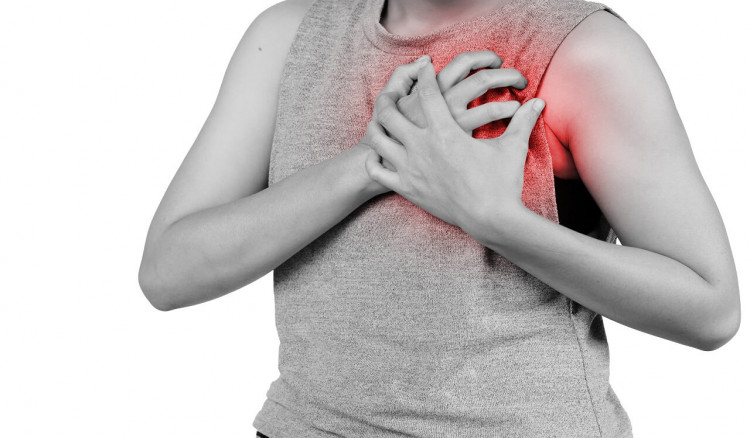
Female Breast: Anatomy, Function and Maintenance
The breast is one of a pair of organs situated on the chest of females and composed of milk glands, fatty tissue and milk ducts leading to the nipple.
Breasts normally develop in girls at puberty in response to hormones secreted by the ovaries and the pituitary gland. The secretion of milk (Lactation) is initiated by a hormone (Oxytocin) produced by the pituitary gland at childbirth, and is stimulated by Breastfeeding.
In boys and men, unusual breast development (Gynecomastia) sometimes occurs because of hormone disturbances, but it can occur normally to a slight degree during adolescence or in obese, mature males.
The shape and size of the breast is determined largely by heredity. If the breasts are overlarge because of obesity, reducing excess weight will, of course, make them smaller. Excessive development or underdevelopment may in rare cases be due to a glandular or other disorder, which should be treated medically.
Extremely large and pendulous breasts can be corrected by Cosmetic Surgery (surgery performed to improve appearance). Never submit to such an operation by anyone but a professional surgeon.
The practice of injecting a ‘harmless’ plastic material into the breast tissue in order to enlarge the breast is foolhardy and dangerous. Normally, all that should be done to conform to fashion—and it is a great deal—is to practice good posture, do upper-arm exercises to tone up muscles in the breast area, and wear a well-fitting brassiere that is not too tight, with some padding, if desired.
Adequate support and protection, as well as cleanliness, are as essential for health as for appearance.
Disorders of the breast include inflammation (Mastitis), Cysts, Abscesses and Tumors. They are fairly common and usually yield readily to treatment. Even the most serious, Breast Cancer, can be treated successfully if detected at an early stage.
Any lump, a change in the nipple, an injury pain or discharge should be referred to a doctor without delay.
Breast Examination and Palpitation
Regular monthly examination and palpitation of the breasts is advisable, especially for women over 40. Make a regular routine of self-examination as follows:
Once a month, before you dress in the morning, stand in front of a mirror and raise your arms above your head. Look carefully for any dimple or depression. Also look closely for any change in shape or size of one breast compared with the other. Then lower the arms and using the hand of the opposite side, press each breast in turn gently against the chest of find if any part seems denser than the rest.
Finally, feel for lumps in the armpits. If you notice anything suspicious, see your doctor. If the condition is harmless, an examination will save you needless worry. If it should be malignant (cancerous), treatment is most likely to be successful if the malignancy is detected early.
Breast Cancer
Breast cancer occurs most commonly in women between 45 and 64 years of age. An estimated 2,261,419 new cases of breast cancer were diagnosed in women across the world in 2020. Among adolescent and young adult females in Nigeria, breast cancer was by far the most common cancer, constituting 50% of all cancers and 51% (2798 of 5469) of all breast cancer cases
The earlier breast cancer is detected, the better the chances are of successful treatment. Unfortunately, too many women delay in reporting the presence of a lump or other telltale signs to their doctor
Breast Cancer Warning Signs
The commonest symptom is a tumor, or lump. It is usually in the top outward part of the breast. The breast should be palpated, or felt, systematically after the menstrual period or once a month to make certain there is no tumor present.
If a suspicious lump is found, it should be reported to the doctor immediately. One out of 13 women, it is estimated, will develop breast cancer. Most lumps, fortunately, are not cancerous; they are benign Tumors or Cysts. But only a doctor is qualified to tell which is which.
Other symptoms to report to a doctor are:
- A rash around the nipple
- Bleeding or other discharge from the nipple
- Sinking or rising of the nipple
- Dimpling of the skin of the breast
- A marked change in the change of the breast.
Pain occurs only in later stages.
The doctor’s examination, which may include the X-ray technique known as mammography, will often rule out the presence of cancer. If it does not, a tiny sample of tissue must be removed and examined by a pathologist.
The Biopsy is taken in a hospital operating room, with the patient under anesthesia. If the finding is positive, the operation, known as Mastectomy, proceeds at once. Usually, the breast and the surrounding lymph nodes are removed; skin grafts may be used to cover the incision.
Later the chest area may be treated with X-rays, or anticancer drugs may be used to destroy any remaining cancer cells.
Breast Cancer Treatment Outlook
The majority of women who have had mastectomies continue to lead healthy, meaningful lives. There are psychological and physical adjustments to be made, of course. With the help of a breast form, it is possible to duplicate the breast contours perfectly.
Certainly, with the removal of a breast, a woman does not lose her particular personality or her attractiveness.
Sources and References
Reader’s Digest Family Health Guide and Medical Encyclopedia
Drug Combinations in Breast Cancer Therapy by Funmilola A. Fisusi and Emmanuel O Akala
Breast Cancer Knowledge and Practice of Breast Self-Examination among Female University Students, Gaza by Samira S Abo Al-Shiekh, Mohamed Awadelkarim Ibrahim and Yasser S Alajerami
Breast Development and Anatomy by Sonali Pandya and Richard G Moore






Share This Article: